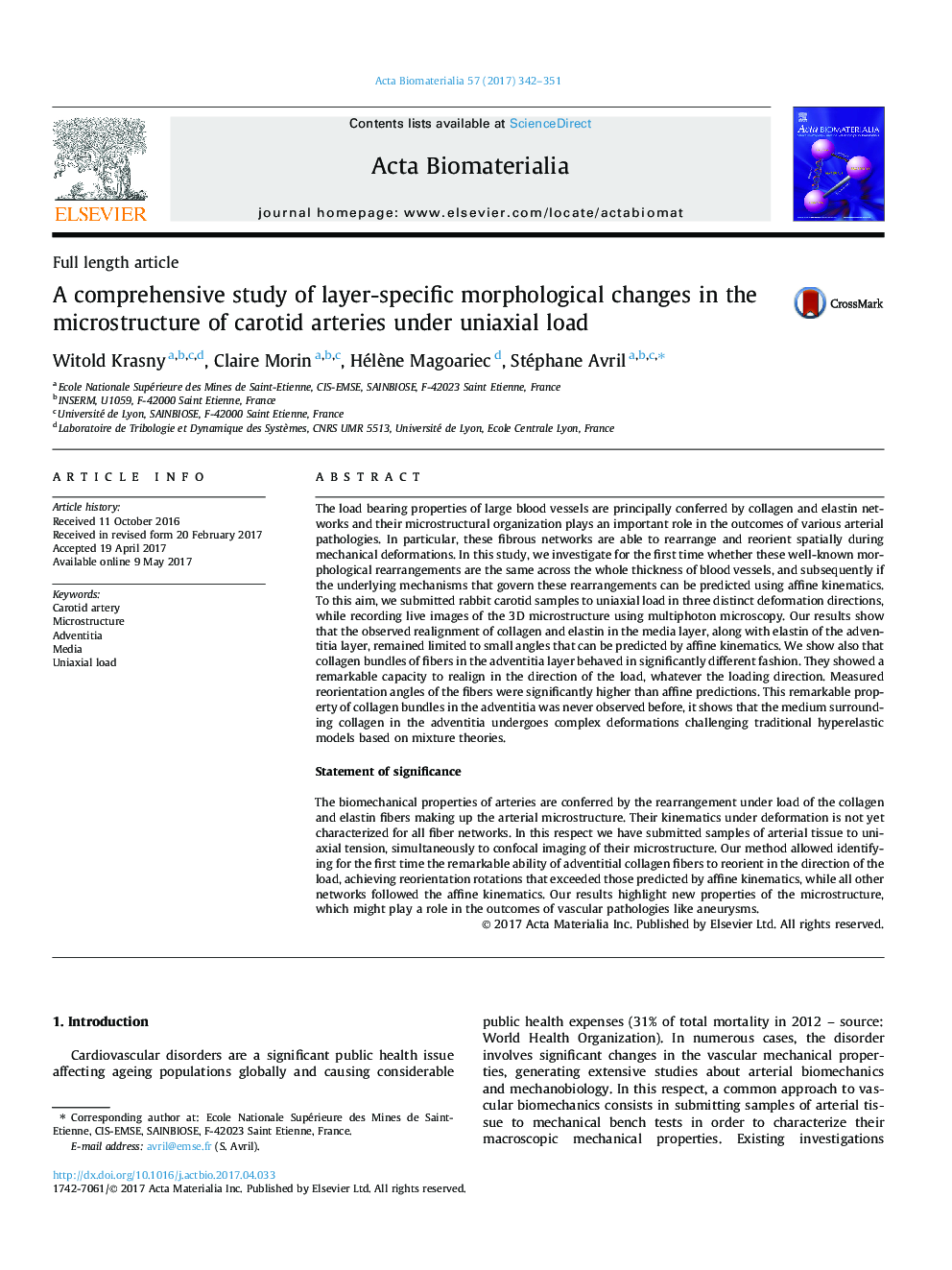| Article ID | Journal | Published Year | Pages | File Type |
|---|---|---|---|---|
| 6449146 | Acta Biomaterialia | 2017 | 10 Pages |
The load bearing properties of large blood vessels are principally conferred by collagen and elastin networks and their microstructural organization plays an important role in the outcomes of various arterial pathologies. In particular, these fibrous networks are able to rearrange and reorient spatially during mechanical deformations. In this study, we investigate for the first time whether these well-known morphological rearrangements are the same across the whole thickness of blood vessels, and subsequently if the underlying mechanisms that govern these rearrangements can be predicted using affine kinematics. To this aim, we submitted rabbit carotid samples to uniaxial load in three distinct deformation directions, while recording live images of the 3D microstructure using multiphoton microscopy. Our results show that the observed realignment of collagen and elastin in the media layer, along with elastin of the adventitia layer, remained limited to small angles that can be predicted by affine kinematics. We show also that collagen bundles of fibers in the adventitia layer behaved in significantly different fashion. They showed a remarkable capacity to realign in the direction of the load, whatever the loading direction. Measured reorientation angles of the fibers were significantly higher than affine predictions. This remarkable property of collagen bundles in the adventitia was never observed before, it shows that the medium surrounding collagen in the adventitia undergoes complex deformations challenging traditional hyperelastic models based on mixture theories.Statement of significanceThe biomechanical properties of arteries are conferred by the rearrangement under load of the collagen and elastin fibers making up the arterial microstructure. Their kinematics under deformation is not yet characterized for all fiber networks. In this respect we have submitted samples of arterial tissue to uniaxial tension, simultaneously to confocal imaging of their microstructure. Our method allowed identifying for the first time the remarkable ability of adventitial collagen fibers to reorient in the direction of the load, achieving reorientation rotations that exceeded those predicted by affine kinematics, while all other networks followed the affine kinematics. Our results highlight new properties of the microstructure, which might play a role in the outcomes of vascular pathologies like aneurysms.
Graphical abstractDownload high-res image (276KB)Download full-size image
